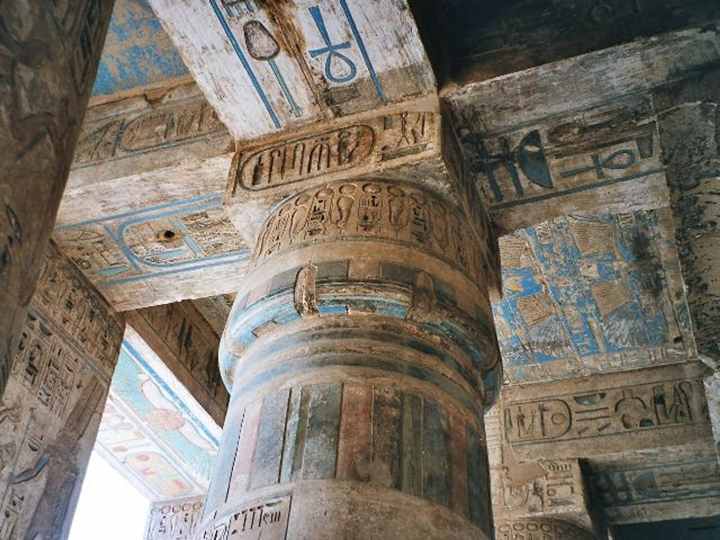
Temple of Ramses III
Exploring the Temple of Ramses III: A Glimpse into Ancient Egypt
Nestled in the heart of Egypt, the Temple of Ramses III at Medinet Habu Luxor is a remarkable testament to the grandeur and complexity of ancient Egyptian civilization. This temple, dedicated to the god Amun and Ramses III himself, offers a fascinating glimpse into the life, beliefs, and artistry of the time.
The Historical Context
Ramses III, the second pharaoh of the Twentieth Dynasty, reigned from 1186 to 1155 BCE. Known for his military prowess and efforts to maintain Egypt’s stability, Ramses III faced numerous challenges, including invasions by the Sea Peoples and internal strife. Despite these difficulties, his reign is often considered the last great era of Egyptian power.
The Purpose of the Temple
The Temple of Ramses III was constructed as a mortuary temple, a place where the pharaoh could be worshipped after death. It was also a center for religious ceremonies and offerings to the gods, particularly Amun,
the king of the gods. The temple served as a symbol of Ramses III’s divine authority and his connection to the gods.
Architectural Marvel
The Temple of Ramses III is renowned for its impressive architecture and intricate carvings. Covering an area of about 150,000 square meters, the temple complex is surrounded by massive walls, creating a fortress-like appearance.
The First Pylon
As you approach the temple, the first thing you’ll notice is the imposing first pylon, adorned with detailed reliefs depicting Ramses III’s military victories. These carvings not only celebrate his achievements but also serve as a powerful reminder of his strength and divine favor.
The Courtyards and Hypostyle Hall
Beyond the first pylon lies a series of courtyards and the grand hypostyle hall. The hall is supported by massive columns, each intricately decorated with hieroglyphs and scenes of religious rituals. Walking through this space, you can almost feel the presence of the ancient priests and worshippers who once filled the temple.
The Sanctuary
At the heart of the temple is the sanctuary, where the most sacred rituals were performed. This area was reserved for the pharaoh and high priests, emphasizing the temple’s role as a bridge between the divine and mortal worlds.
Artistic and Cultural Significance
The Temple of Ramses III is a treasure trove of artistic and cultural insights. Its walls are covered with vibrant reliefs and inscriptions that provide valuable information about the religious practices, daily life, and historical events of the time.
Depictions of Daily Life
In addition to religious scenes, the temple’s reliefs offer glimpses into the daily life of ancient Egyptians. You can find depictions of agricultural activities, hunting, and celebrations, providing a well-rounded picture of the society that built this magnificent structure.
Religious Symbolism
The temple’s art is rich with religious symbolism, reflecting the Egyptians’ deep spiritual beliefs. The recurring images of gods, goddesses, and sacred animals highlight the importance of religion in every aspect of life, from governance to agriculture.
Legacy of Ramses III
Ramses III’s legacy is intricately tied to the temple he built. Despite the challenges he faced during his reign, the temple stands as a testament to his determination to uphold Egypt’s traditions and power.
The Harem Conspiracy
One of the most intriguing aspects of Ramses III’s reign is the Harem Conspiracy, a plot to assassinate the pharaoh orchestrated by one of his wives and several officials. Although the conspiracy ultimately failed, it reflects the internal tensions and complexities of his rule. The temple’s inscriptions provide some of the earliest records of this dramatic event.
Visiting the Temple Today
For modern visitors, the Temple of Ramses III offers a unique opportunity to step back in time and experience the grandeur of ancient Egypt. Located on the west bank of the Nile near Luxor, the temple is part of the larger Medinet Habu complex, which includes other significant structures and ruins.
What to Expect
As you explore the temple, you’ll be struck by the sheer scale and detail of the architecture and art. The well-preserved reliefs and inscriptions allow you to connect with the past in a tangible way, making it a must-visit destination for history enthusiasts and casual travelers alike.
Tips for Visiting
- Best Time to Visit: The cooler months from October to April are ideal for exploring the temple, as the temperatures are more comfortable.
- Guided Tours: Consider hiring a knowledgeable guide to enhance your understanding of the temple’s history and significance.
- Photography: The temple offers stunning photo opportunities, especially during the early morning or late afternoon when the light is soft and golden.
The Human Connection
What makes the Temple of Ramses III truly special is the human connection it fosters. As you walk through its halls and courtyards, you can almost hear the echoes of ancient voices and feel the presence of those who once worshipped here. The temple is not just a relic of the past; it’s a living testament to the enduring spirit of human creativity and devotion.
Recent Posts
Edfu Temple :5 Reasons to Explore the Majestic Today
Discover 7 Amazing Features of Sinbad Hotel Egypt for 2024
Top 7 Reasons to choose Egypt Air Hospital in Egypt
All Categories
Tags

Thailand





